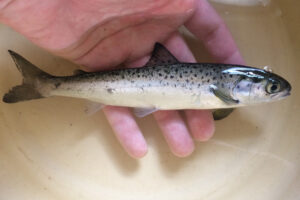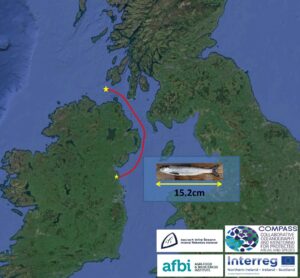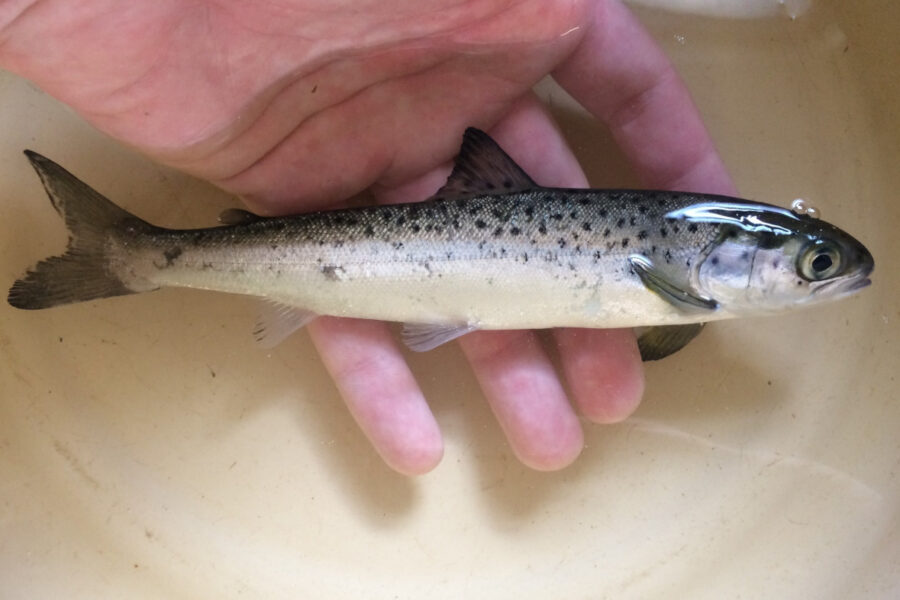New research has shown that young salmon from rivers on the east coast of Ireland travel northwards to leave the Irish Sea, rather than going south to join salmon on the western coast, before heading to their oceanic feeding grounds, reports Pauric Gallagher.
The research was carried out as part of the Collaborative Oceanography and Monitoring for Protected Areas and Species (COMPASS) project, a transnational initiative which focuses on the coastal seas between Ireland and western Scotland.
Inland Fisheries Ireland (IFI) and Northern Ireland’s Agri-Food and Biosciences Institute (AFBI) revealed the new findings after researchers tagged 130 salmon smolts with coded acoustic transmitters in the Castletown and Boyne rivers in Co Louth during the spring of last year.

Salmon smolts were tagged with coded acoustic transmitters as part of the COMPASS research.
A network of acoustic receivers were moored to the seabed along the coast from Drogheda to the northeast coast to track the tiny transmitters in the salmon.
Three of the tagged salmon were picked up on the listening devices in the coastal seas as they travelled northwards out of the Irish Sea towards the Atlantic Ocean. These salmon also moved offshore quickly, behaving very differently from tagged sea trout, which remain closer to their spawning rivers and swim closer to the coast and river mouths.
Dr William Roche, senior research officer at the IFI, said: “As salmon populations are in decline across the northern hemisphere, we urgently need to establish their migration journey and identify any issues which may be negatively impacting survival along that route. This research marks an exciting milestone, and it will play a critical role in supporting marine conservation efforts.”
Dr Cathal Gallagher, head of research and development at the IFI, said: “Salmon hatch in their native river, spend their juvenile life feeding in freshwater, and prepare for their long sea migration before returning as adults, usually one year later, to mate in their native river. Genetic analysis has shown this loyalty to their native river, which can be traced back to the Ice Age.
“The COMPASS project has, for the first time, identified the northward migration route of young salmon from some of Ireland’s east coast rivers, as they start their epic and dangerous journey to their feeding grounds in the north Atlantic Sea.

The northward migration route followed by Irish east coast salmon.
“Research results like these offer insights which will enable policy-makers and managers to focus actions aimed at the protection and conservation of Ireland’s iconic salmon stocks, which have suffered considerable decline over the past decades.
“Inland Fisheries Ireland will continue in its research efforts, nationally and internationally, to support the conservation of our salmon stocks, which are threatened by current and increasing threats posed by a changing environment.”
Dr Robert Rosell, principal scientific officer for freshwater fish at AFBI, said: “We are now in a position to carry out follow-up studies to find out much more. These results will optimise the placement of further detection equipment and add information, for instance on survival rates, for further releases of tagged fish. Now that we know where to look, advancing technology and longer battery-life tags may soon give us not just the outward journey, but also detail of the routes taken by adult fish coming back to spawn.”








